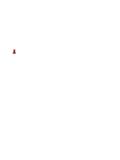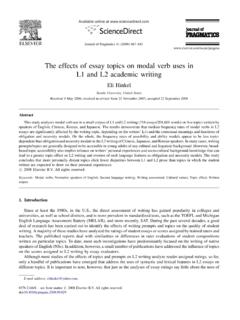Transcription of The Onilne Hebrew Tutorial - FoundationStone
1 The Online Hebrew Tutorial Version Somewhere on the road south of Dahab, eastern Sinai Peninsula . INTRODUCTION.. 3. LESSON 1 - THE ALPHABET.. 3. LESSON 2 - VOCALISATION.. 6. LESSON 3 - NOUNS PART 1 .. 1 2. LESSON 4 - THE DEFINITE ARTICLE .. 1 5. LESSON 5 - THE ADJECTIVE.. 1 7. LESSON 6 - THE CONJUNCTION .. 1 9. LESSON 7 - PREPOSITIONS .. 2 1. LESSON 8 - PRONOUNS .. 2 2. LESSON 9 - ADVERBS.. 2 5. 1. LESSON 10 - VERBS PART 1 .. 2 6. LESSON 11 - VERBS PART 2 .. 2 9. LESSON 12 - VERBS PART 3 .. 3 6. LESSON 13 - NUMBERS.. 3 9. LESSON 14 - NOUNS PART 2.. 4 3. LESSON 15 - DIFFERENCES BETWEEN MODERN AND BIBLICAL Hebrew .. 4 7. LESSON 16 - WEAK VERBS.. 4 9. LESSON 17 VERBS PART 4.. 5 2. RECOMMENDATIONS FOR FURTHER STUDY.. 5 8. USEFUL RESOURCES .. 5 9. ONLINE RESOURCES.. 6 0. APPENDIX A ORIGIN OF THE ALPHABET.. 6 0. APPENDIX B THE CURSIVE ALPHABET .. 6 3. APPENDIX C THE TETRAGRAMMATON.
2 6 5. ERRATA.. 6 7. FEEDBACK .. 6 7. ANSWERS TO EXERCISES .. 6 7. LESSON 2 VOCALISATION ..67. LESSON 3 NOUNS PART 1 ..68. LESSON 4 THE DEFINITE LESSON 5 - THE ADJECTIVE ..69. LESSON 6 - THE LESSON 7 - LESSON 9 - ADVERBS ..70. LESSON 13 - NUMBERS ..70. PICTURE CREDITS.. 7 1. BIBLIOGRAPHY .. 7 1. Copyright 1998-2000 by Ben Stitz. Free, however all rights reserved. Redistribution is permitted provided that - (a) this copyright notice is duplicated in all such forms and that any documentation, advertising materials and other materials related to such distribution and use acknowledge that the material was developed by Ben Stitz and (b) that the material is distributed in its original unmodified form, 2. with the accompanying Java application. (c) unlimited hard or soft copies are permitted for student or teacher use. (d) may be included on CD software collections. THIS MATERIAL IS PROVIDED "AS IS" AND WITHOUT ANY EXPRESS OR IMPLIED.
3 WARRANTIES, INCLUDING, WITHOUT LIMITATION, THE IMPLIED WARRANTIES OF. MERCHANTABILITY AND FITNESS FOR A PARTICULAR PURPOSE. Introduction This Tutorial teaches both Biblical and Modern Hebrew , with an emphasis on Modern Hebrew as spoken in the State of Israel today. This is because with Hebrew , the past cannot be meaningfully separated from the present. The latest version of this document is available at if you have not already done so, put yourself on the mailing list for updates by following the instructions on that page. A file " " is available in the distribution. If you have the Adobe Acrobat viewer (available free of charge at ) a high quality paper copy can be made. For those who need a larger print version, one is available for download at The Tutorial is a complete course. However, it is also designed for use with whatever other learning materials you find useful, interesting or beneficial.
4 Master the lessons in the order indicated, and do all the exercises for full results. Due to the goal of advancing the student as rapidly as possible, the course is heavy going in parts, and may not be a favourite to those who prefer a gentler pace. There is extensive, but hopefully not unnecessary, grammar. It is what I would have liked people to have told me when I was learning, and fills a gap that I feel exists in the courses I have seen. Like all skills Hebrew requires considerable effort to learn - it takes some time before it all starts to make sense. I hope you persevere until you reach that point. Lesson 1 - The Alphabet A good place to start is at the beginning, and Hebrew begins with an alphabet (infact the alphabet). Don't be too concerned that the following table looks very unfamiliar at first glance. Here is the Hebrew Alphabet . Printed Name Cursive Trans- Value literation 1.
5 '. 3. v; b 2. gh; g 3. dh; d 4. h 5. v 6. z 7. ch 8. t 9. y 10. kh; k 20. l 30. m 40. n 50. s 60. ` 70. ph, p 80. tz 90. 4. q 100. r 200. s; sh 300. t 400. There is also an alphabet used prior to the Babylonian exile, which appears on archaeological relics. Interested readers are referred to Appendix A Origin of the Alphabet . Basic Principles: Hebrew uses an alphabet of 22 consonants. It is written from right to left, top to bottom. Notice that the consonants , , , and when appearing at the end of a word take what is called the final forms , , , and respectively. Thus not . The symbols written above and below the consonants are the vowels these will be covered next lesson, so ignore them for now. Note that the pronunciations given in the table are Sephardi (originating from Spain and North Africa), and is the pronunciation used in the State of Israel. Many communities use the Ashkenazi (German) pronunciation the most obvious difference is that is pronounced s as in Shabbas , rather than Shabbat for , the day of rest.
6 Difficult Letters: People who speak European languages often have problems pronouncing , and ; and . has a peculiar throaty sound, whereas and are indistinguishable. is simply a pause, like in the word o'clock . is the hardest to describe it is like clearing your throat. Shortly, we will be using a video to learn them. Exercise 1a: 5. Referring to the table above, learn the printed alphabet and try to and become familiar with the cursive (modern handwritten) letters along the way. Learn to recognise the letters and their transliterations (you will be unable to read their names until the next exercise). Practice reading and writing them in alphabetical order. The Hebrew numerical values are rarely used in Modern Hebrew (a modern text contains the familiar Arabic numerals 1-10, so you can ignore them for now). Exercise 1b: Browse the link: and follow the instructions to install the QuickTime media layer (if necessary).
7 Quicktime enables your computer to play the various multimedia files used in this Tutorial . Download and play the . video. The speaker will read from the above table, follow along and practice producing the correct sounds and saying the names of the letters. In particular pay close attention to , and ; and . Exercise 1c: When you think you know the table, go into FoundationStone and learn the letter pronunciations, without listening to . Select the Alphabet word type filter, and practice. Optional Exercise 2a: Redo exercise 1a, but with the emphasis on learning the cursive (handwritten) script. You will need to consult Appendix B The Cursive Alphabet before proceeding. Optional Exercise 2b: When you think you know the table, go into FoundationStone and select the Alphabet . word types from the filter menu. In the Edit menu, select General . Click on the Handwritten Hebrew button, then the Apply button to change the font.
8 Practice recognising the cursive letters. When you are finished return to the printed Hebrew font. Optional Exercise 2c: Return to the printed font, and redo exercise 1c, this time learning the numerical values of the letters. This is chiefly for Biblical Hebrew students who are interested in the topic of Gematria (where words are given numerical values equal to the sum of the consonants that compose them). Lesson 2 - Vocalisation 6. To pronounce consonants together in a word, we need to have some vowels between them, and some rules for how to do it. Here are the Hebrew vowels . Symbol Name Vocalisation vowel short "a" like a in father vowel short "e" like e in get vowel short "i" like i in lid vowel short "o" like o in top vowel short "u" like u in but vowel long "a" like a in bar vowel long "ae" like e in hey (or a in may). vowel long "ae" like e in hey (or a in may).
9 Vowel long "i" like the final i in Israeli vowel long "o" like o in over vowel long "o" like o in over vowel long "u" like u in tube silent OR vowel "very short e" like first a in banana vowel "very short a" like a in lather vowel "very short e" like e in elf 7. vowel "very short o" like o in colic Basic Principles: Hebrew is a phonetic language it is spoken how it is written. Therefore at the end of this lesson you will be able to correctly pronounce or follow a reading of any written text that is pointed, or has niqudot. are the signs appearing above and below the line of the text. In a modern Israeli newspaper or book, the vowels are dropped (reappearing occasionally if the pronunciation of a word is unusual). After some familiarity with the language, you will be able to anticipate these vowels from their context and supply them mentally. Essentially, Hebrew is a language of consonants, with vowels placed between them to aid pronunciation.
10 Therefore, it is unnatural to say two consonants one after the other. When this is necessary, a device called the Seva (see below) is used. th The vowel symbols above were invented around the 8 Century CE by a group called the Massoretes, as an aid to correct pronunciation. They devised a scheme having vowel signs (previously supplied by a reader intimately familiar with the texts) explicitly written above and below the sacred (and therefore inalterable) text of consonants. Today, a Torah scroll (ie Genesis through Deuteronomy) is still written without and must be read aloud by an expert (or thoroughly rehearsed) reader. Note that Hebrew was successfully written down for at least 2000 years without recording the vowels. This was possible because some consonants, specifically , and can also be used as vowels: (eg is associated with ; is used in vowels and ; and is used in vowels and ).





